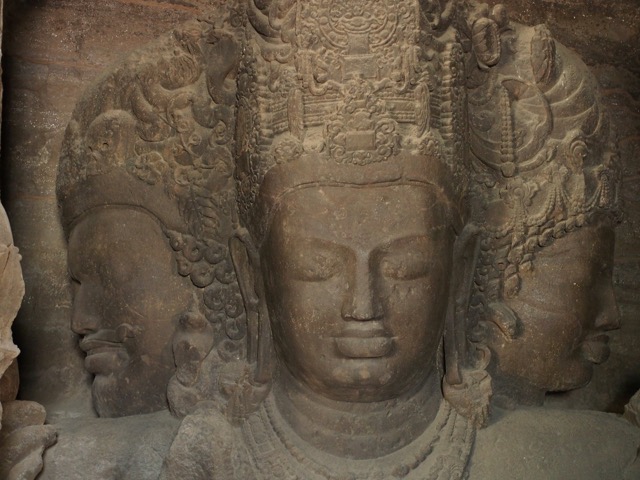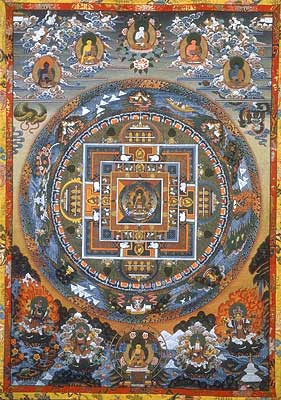The Adventures of Pinocchio – an Alchemical Tale of Self-Transformation
Article By Agostino Dominici
posted by UK, January 26, 2023
 I am sure that many people will be familiar with the Italian children’s story, The Adventures of Pinocchio, a 19th century novel written by Carlo Lorenzini (pseudonym C. Collodi), which became the most translated Italian book ever (it has been translated into as many as 260 languages worldwide!). The novel tells the story of a little marionette who wants to become a real boy.
I am sure that many people will be familiar with the Italian children’s story, The Adventures of Pinocchio, a 19th century novel written by Carlo Lorenzini (pseudonym C. Collodi), which became the most translated Italian book ever (it has been translated into as many as 260 languages worldwide!). The novel tells the story of a little marionette who wants to become a real boy.
Collodi’s story begins with Mastro Ciliegia (Master Cherry) and his piece of rough wood. Not an ordinary piece of wood but one which is animated and full of life potential. What will be the fate of this piece of wood? A table leg, the fireplace or something else?
Very soon, the piece of wood will end up in the hands of Geppetto, a carpenter who has already envisioned its fate. He will turn it into a marionette.
Thus Pinocchio is born, a puppet of wholesome morals, but not fully formed, and therefore liable to be led astray by the lures of profane life. From this moment on, as the creator identifies with his work, Geppetto and his creature live almost symbiotically. They suffer from each other’s sufferings, rejoice in each other’s hopes, and face the same hardships, though in different ways and places.
As soon as the puppet has been finished and Geppetto teaches him to walk, Pinocchio runs out of the door and away into the town. From this moment on, Pinocchio (as well as Geppetto) will go through many adventures. Pinocchio will soon fall in with a variety of bad characters, particularly the Fox and the Cat, who, disguised as assassins, will hang Pinocchio in order to steal from him five gold pieces. Twice he will begin attending school, and twice he will allow himself to be led astray, the second time resulting in his becoming a donkey and being thrown into the sea. After further adventures, Pinocchio will be swallowed by a terrible shark where he will find Geppetto living in the fish’s belly. Eventually Pinocchio will rescue his father and thereafter will take care of him.
An important part of the story includes the several encounters that Pinocchio will have with a Fairy with turquoise hair. Many times she will come to his rescue and towards the end of the story she will reward the marionette, transforming it into a real boy.
In a nutshell, this is the main plot of the story. A story with many twist and turns, full of symbolic characters and teachings which go beyond moral and pedagogical lessons. As a matter of fact, Collodi’s words take us much further than just a conventional children’s tale. They take us through an initiatory journey which will culminate in self-realisation.
I invite everyone to read the original story, which contains many gems of spiritual literature. As an incentive for those who are really intrigued by it, I am going to give few keys of interpretation based mainly on the hermetic and alchemical tradition. The transmutation from lead into gold, from a wooden puppet into a human being.
Master Ciliegia (Cherry): the true giver of life. Pinocchio’s natural and Geppetto’s spiritual father.
Geppetto: an aspect of Pinocchio as the alchemist and artifex (creator of HimSelf, his true Self). Geppetto is also the father, the old king, the personification of the alchemical Tradition in the figure of Hermes Trismegistus.
The Rough Piece of Wood: the prima materia, the all-important starting material required for the Magnum Opus(the Alchemical Great Work of inner transformation). The rough Ashlar (i.e. stone) in the tradition of Freemasonry.
Pinocchio the marionette: the name is derived from the Tuscan language and it means pine nut, the edible seed found in pine cones. Hidden in this name there are various esoteric allusions : the pine tree as a symbol of immortality, the pineal gland (or third eye), a pine-cone crowning the two intertwined snakes in the caduceus of Hermes.
The School Book (spelling-book): the alchemist’s working alphabet, which is just a dead letter if it is not put into practice.
The Bestiary (the various animals appearing in the story): instinctual aspects in Pinocchio’s nature. They can also be seen as aspects of man’s ‘natural intelligence’, thus as ‘allies’ along the journey.
The Talking Cricket: in one key, it is the voice of conscience. At a different level it is the personification of those behavioural and social norms that guide us towards a socially acceptable but spiritually sterile life. In fact, the early part of the story shows clearly a rebellious Pinocchio, who wants to free himself from social conventions and moral codes.
The Puppets and the Puppet Theatre: the world where human beings are seen as puppets, a metaphor for man’s inner slavery (see Plato’s Myth of the Cave). The conception of the human being, as a puppet manipulated by strings from a hidden being that composes the script of life, goes back to the Upanishads. In the Mahabharata, the analogy consists of the reference to wood as the raw material from which the world is made; thus, the creator (the Demiurge) is a carpenter.
As soon as Pinocchio the puppet can move, he realises that he is pulled and dominated by passions, instincts and desires. He begins to feel hunger, thirst, cold. He does not want to do what he does not like, etc. It is in the Puppet Theatre that Pinocchio comes to realise for the first time his existential condition, that of a puppet!
Mangiafuoco : In one key, as a terrifying image, he is the personification of fear, the guardian of the threshold barring the way to the spiritual traveller. In a different key, he is the ‘awakener’, a being of fire and light, the personification of willpower. And it is in front of Mangiafuoco that Pinocchio makes his first act of will by offering to sacrifice himself in the sacred fire. Thanks to this selfless act, he is rewarded with five gold coins (metaphors of inner gold/inner fire).
The Cat and the Fox: masks or aspects of the persona Pinocchio. As the assassins, these are forces which try to lead Pinocchio astray from walking the straightforward path (see the beginning of Dante’s Divine Comedy). In their positive role, they represent the initiators who push Pinocchio to overcome his fear and limitations. For instance, they lead him through the dark forest into the first initiatory trial.
Pinocchio Hanged on a Giant Oak Tree : Pinocchio’s first death trial. Alchemically speaking, it is a leap into the abyss, the entry into the Nigredo phase. The act of hanging transforms Pinocchio into a different being, as it re-connects him to the root of his life, the Great Oak Tree, which lifts him up from the ground (the material plane).
This image reminds me of the Hanged Man, in the Tarot cards. Only through a radical change of perspective and the complete abandonment of an obsolete mode of being, can self-transformation occur.
Field of Miracles: the alchemical soil within the alchemist who is himself fertile soil for the Great Opus to take place.
The White House, the City of Catchfools, Toyland, the Island of the Busy Bees, etc.: all these metaphorical places are parts of the inner landscape of Pinocchio the alchemist.
Solve et Coagula: this hermetic formula is at the base of the alchemical work. What is gross has to be made subtler and what is volatile has to be made fixed. In short, each element involved in the transformation has to be continuously purified so as to acquire greater and more noble qualities. In the story we find various images referring to these purifications or alchemical cleansing. The fire burning Pinocchio’s feet. The woodpeckers which land on Pinocchio’s elongated nose and start to eat it. The fishes which eat away the skin of Pinocchio, the Donkey, etc. All these stages of purification are connected to one of the four elements (Fire, Water, Air, Earth).
The Growing Nose of Pinocchio: represents his libido and it is probably connected to the controlling of the Kundalini force.
The Donkey: the most basic and instinctual elements in a human being. The inertia and stubbornness found in matter and in the material condition. What hinders and limits the human being from realising his higher aspirations. As a Saturnian symbol, it also represents the means that Pinocchio has to learn virtues such as obedience, humility and patience.
The Fairy with Turquoise hair: a magical element which symbolises the various aspects of Pinocchio’s soul in its stages of growth: little girl, sister, lady, baby goat, and heavenly bride. Towards the end of the story, her kiss is Pinocchio’s ‘kiss of death’ as a puppet.
The Giant Shark: This image appears in connection with Pinocchio’s final initiatory trial in the underworld (in the depths of the sea). To be swallowed by the shark means to get in contact with those aspects of oneself which are hidden or have been forgotten. It is to conquer the dimension of the unconscious. The dark belly of the shark also symbolises the oneiric and mythological dimension. One’s place of origin, where the vision of one’s True Self can be glimpsed. Interestingly this is the place where Pinocchio encounters again his father Geppetto.
Pinocchio the child: the outcome and completion of the alchemical Great Work. The Philosopher’s Stone, the Philosopher’s Gold. The final words of the novel stress the idea that this was not simply a transformation but a transmutation, the ‘creation’ of a complete ‘new being’. When Pinocchio asked Geppeto: ‘And where has the old wooden Pinocchio hidden himself ?’
‘There he is’, answered Geppetto, and he pointed to a big puppet leaning against a chair, with its head on one side, its arms dangling, and its legs so crossed and bent that it was really a miracle that it remained standing.
Pinocchio turned and looked at it and after he had looked at it for a short time, he said to himself with great complacency: ‘How ridiculous I was when I was a puppet!’
Image Credits: By Walt Disney | Wikimedia Commons | CC BY PD
Related posts:
Image References
By Walt Disney | Wikimedia Commons | CC BY PD
Permissions required for the publishing of this article have been obtained



What do you think?